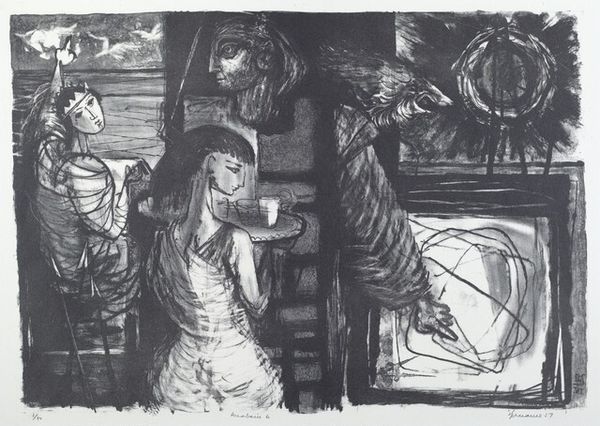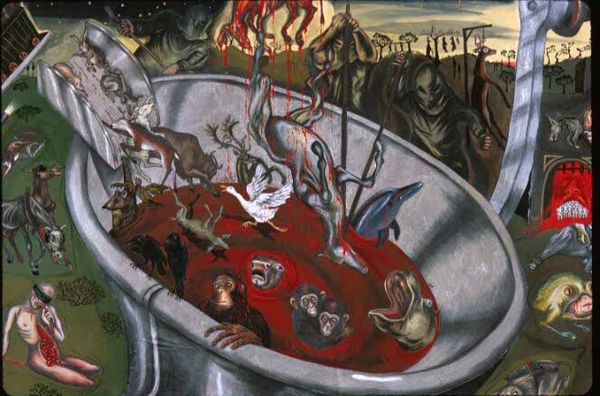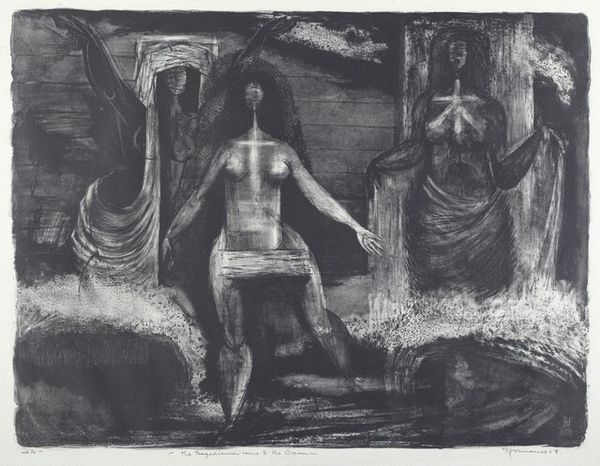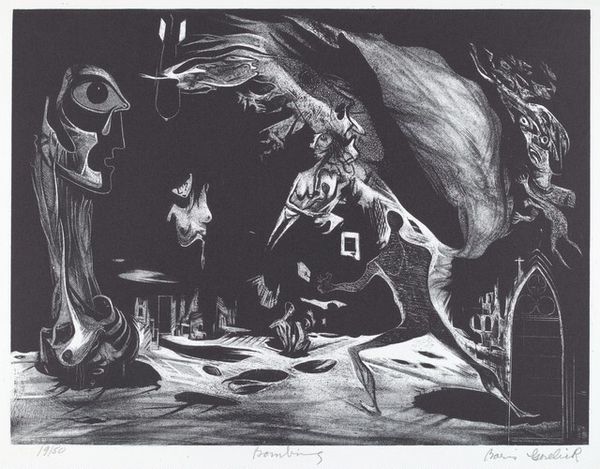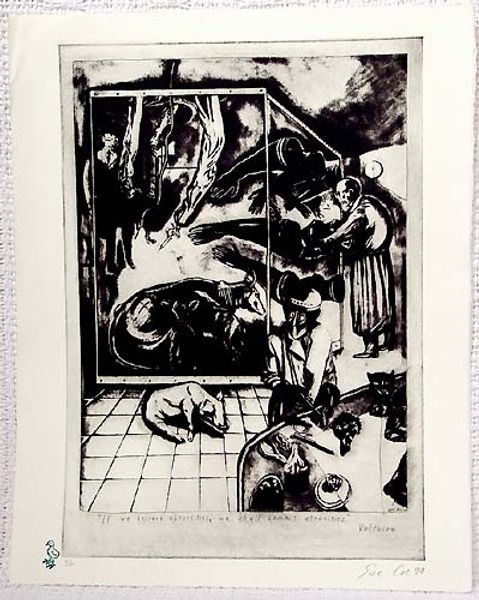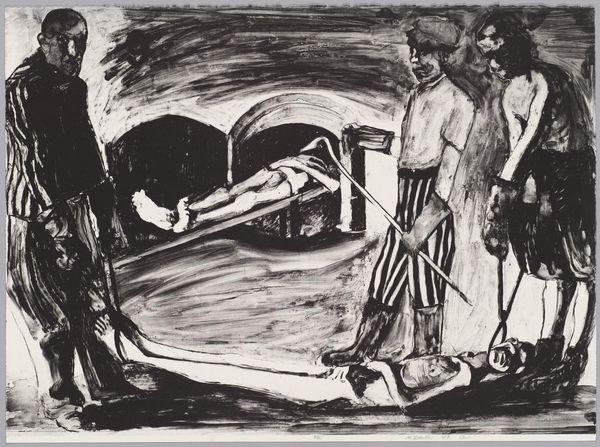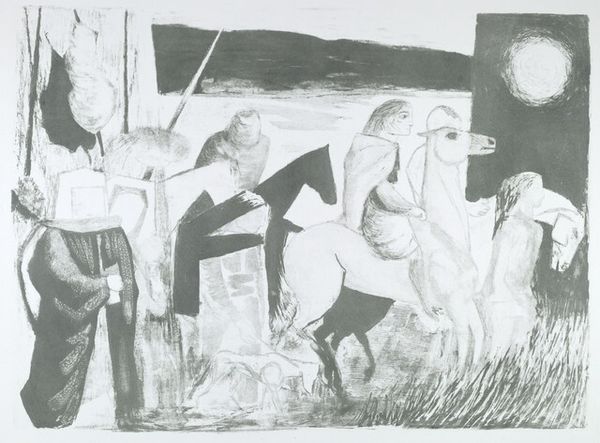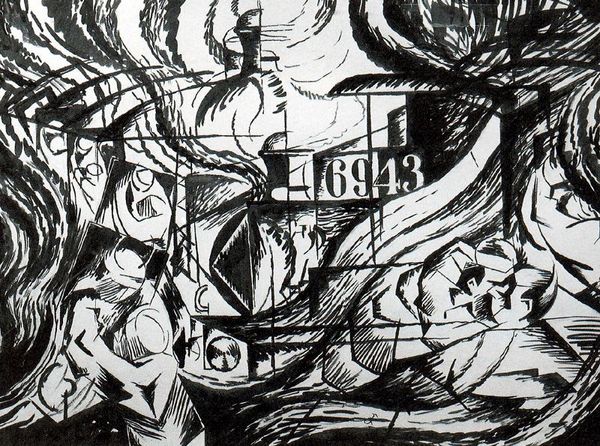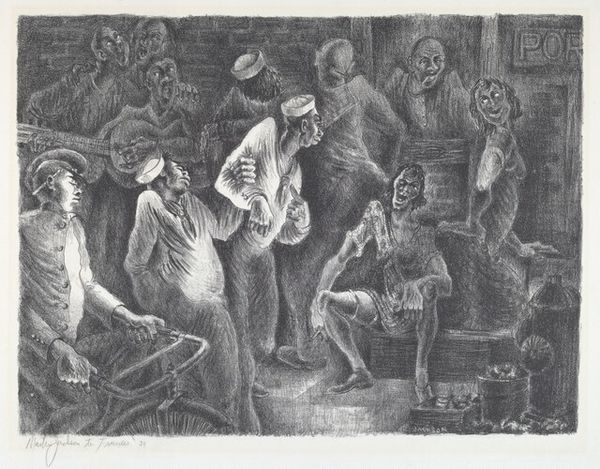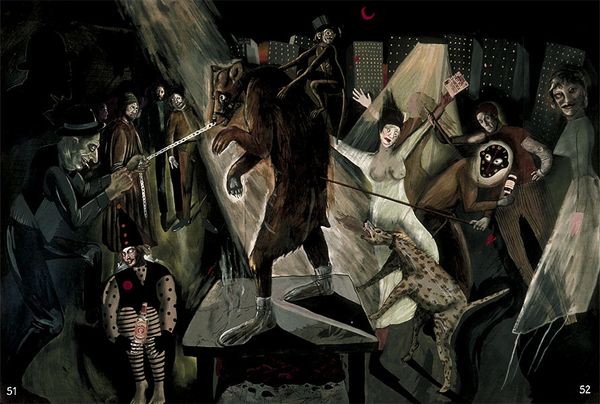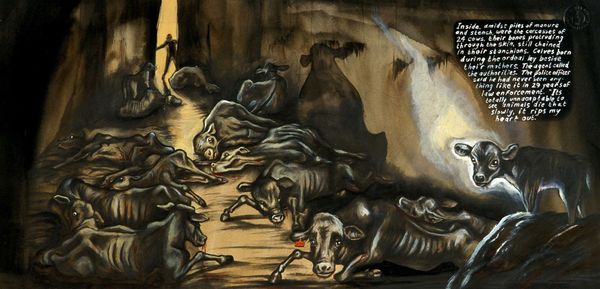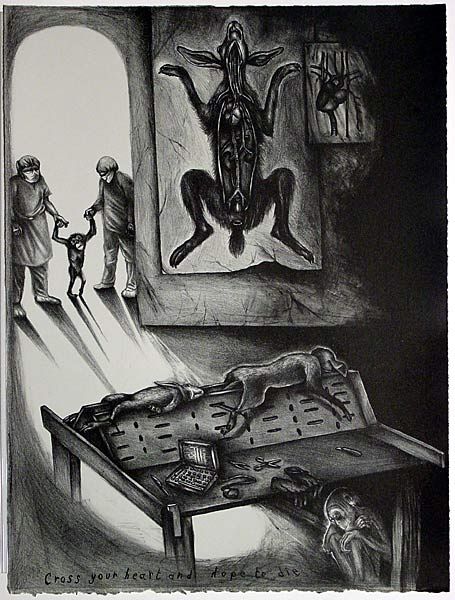
painting, charcoal
#
portrait
#
narrative-art
#
animal
#
painting
#
landscape
#
figuration
#
expressionism
#
surrealism
#
abject-art
#
charcoal
#
surrealist
#
surrealism
Copyright: Sue Coe,Fair Use
Curator: Sue Coe’s piece, titled "Meat Fly," uses charcoal and paint to create a scene that is both grotesque and powerfully symbolic. The monochromatic palette certainly amplifies the grim nature of this work. What is your initial response? Editor: My first impression is one of visceral unease. The high contrast between light and shadow renders a nightmarish atmosphere. There's a palpable sense of claustrophobia, underscored by the subject matter itself—factory farming. It evokes a strong emotional reaction, bordering on disgust and a profound sense of sorrow. Curator: Let's delve into the composition. Coe masterfully arranges various scenes within a confined space. The use of linear perspective guides the viewer's eye through the image, revealing different stages of animal processing. Did you observe how she uses space? Editor: Absolutely. The space is fragmented, almost like a multi-paneled comic, showing the horrific cycle of industrialized meat production. There’s a deliberate disruption of spatial coherence that heightens the sense of disorientation and moral bankruptcy, placing humans and animals alike in scenes of violence. We need to ask, who profits from this industrial carnage? Curator: From a purely formal standpoint, observe the contrasts in texture: the smooth surfaces of the processed carcasses against the rough, sketchy lines of the surrounding environment. The juxtaposition creates a certain visual tension. It almost feels unfinished, incomplete, which adds to the uneasiness. Editor: I agree. These visual disjunctions serve a specific political purpose, I believe. By making visible the disturbing practices, Coe prompts us to question the ethics of consumption and the structures of power that allow such brutality to occur. The flies are an explicit indicator of decay. Curator: The stark composition definitely captures something of the sublime horror genre that emerged out of Romanticism and developed alongside social realism and expressionism at the end of the nineteenth century. Coe draws attention to the structures in play, too. The geometry almost has echoes of surveillance technology and urban decay. Editor: "Meat Fly" becomes a testament to the interconnectedness of social, ecological, and ethical crises that plague our times. We're forced to witness uncomfortable truths. Curator: On a more restrained note, her stark visual language succeeds in evoking complex and critical emotions that haunt the viewer long after they've moved on. Editor: Absolutely. The abject nature of the scene stays with you, prompting introspection about the broader systems at play that produce suffering.
Comments
No comments
Be the first to comment and join the conversation on the ultimate creative platform.

